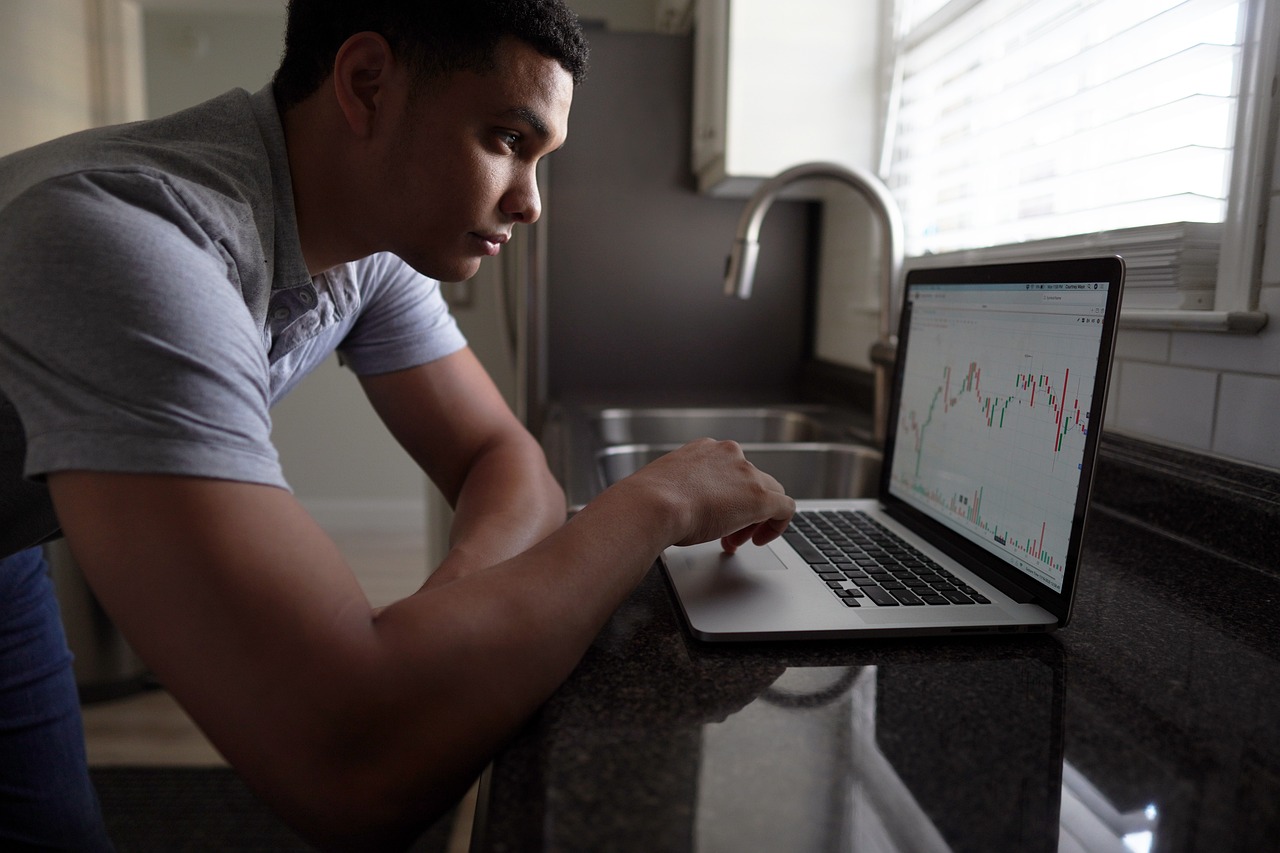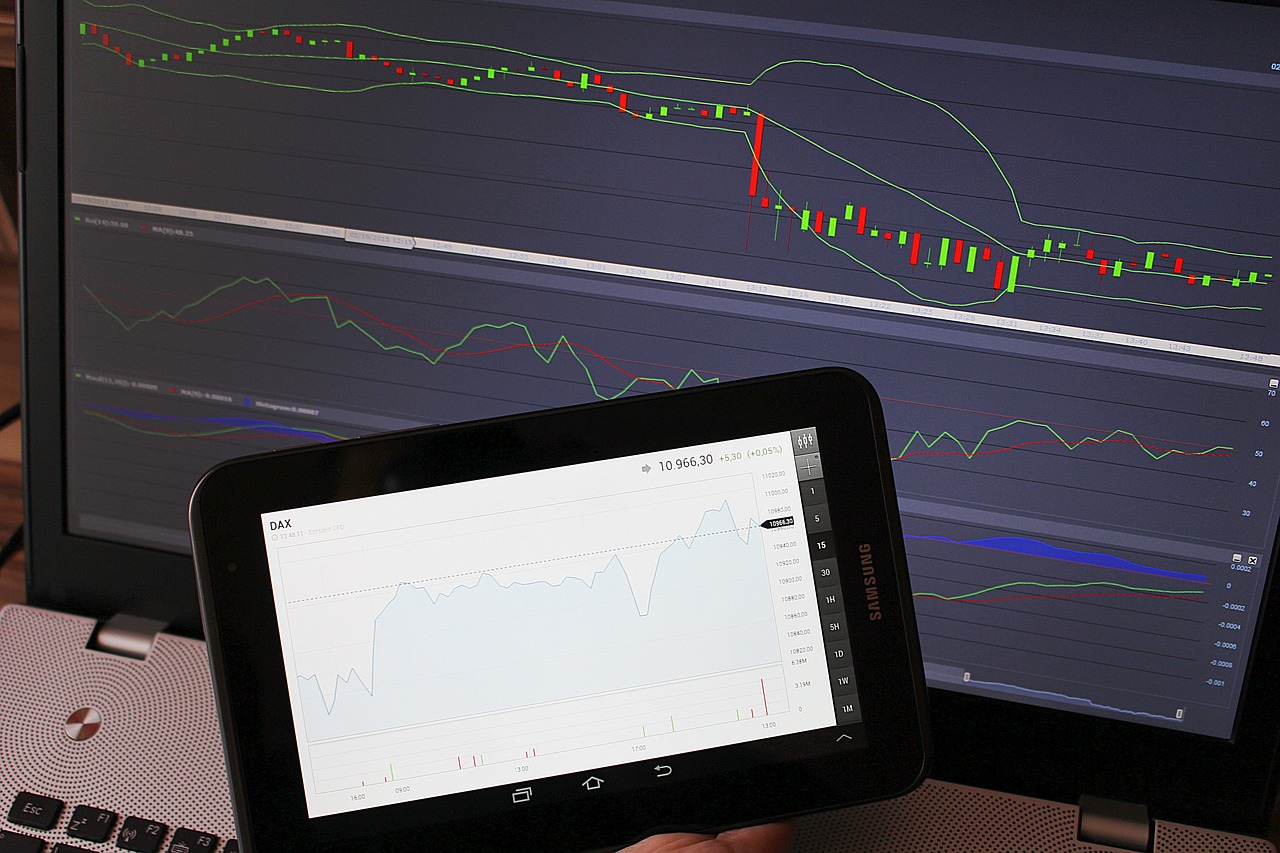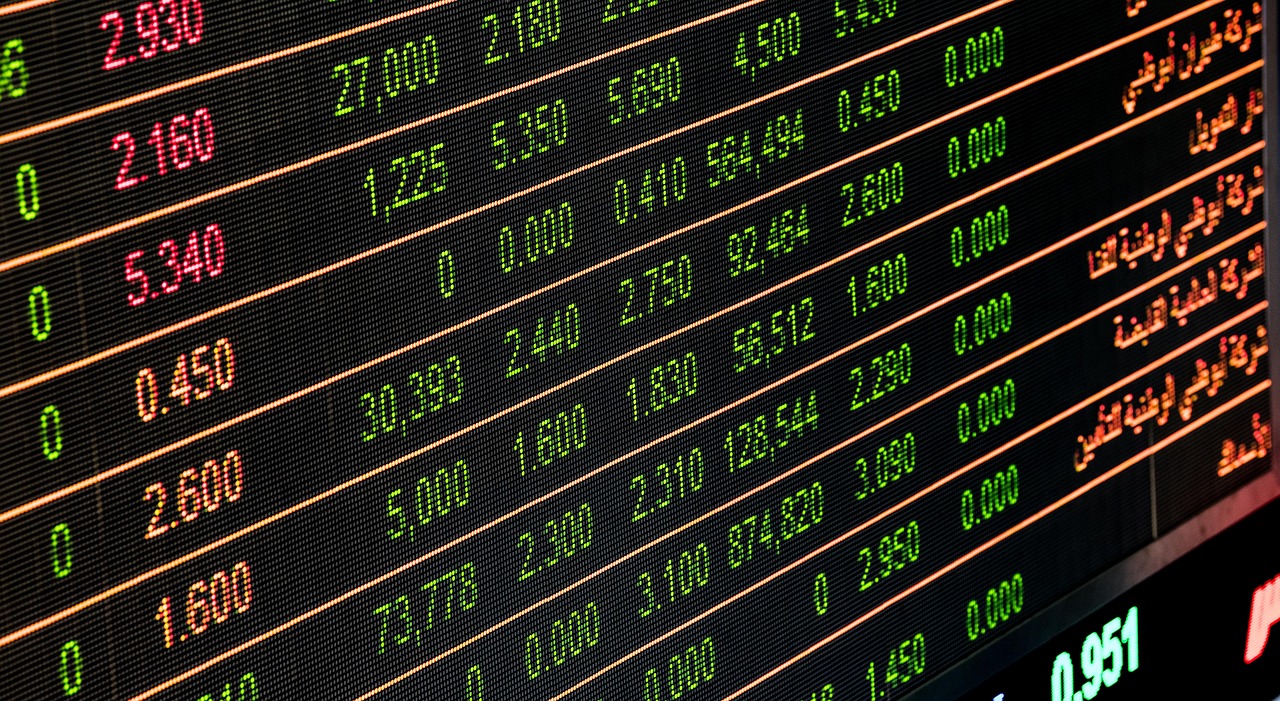The Role of AI in Crypto Trading Strategies
In the fast-paced world of cryptocurrency trading, artificial intelligence (AI) has emerged as a game-changer, revolutionizing how traders approach the market. Imagine stepping into a bustling marketplace where every decision counts, and the stakes are high. This is the reality for crypto traders, where price fluctuations can happen in the blink of an eye. Enter AI, the digital ally that not only assists traders in making informed decisions but also enhances their overall trading strategies. With its ability to process vast amounts of data and identify patterns, AI is transforming the landscape of crypto trading in ways we could only dream of a few years ago.
As we delve deeper into the role of AI, it's essential to recognize the dynamic nature of cryptocurrency markets. These markets are known for their volatility, making it imperative for traders to stay ahead of the curve. AI technology integrates seamlessly into trading strategies, enabling traders to react swiftly to market changes. Think of AI as a seasoned navigator guiding a ship through turbulent waters—it provides insights and forecasts that help traders avoid potential pitfalls while maximizing their gains.
Moreover, AI's impact on crypto trading isn't just about speed; it's also about precision. With machine learning algorithms, traders can analyze historical data to predict future price movements. This capability allows for the development of sophisticated trading models that adapt to market conditions. Imagine having a crystal ball that not only shows you the future but also learns from every market shift. That's the power of AI in crypto trading!
In addition to enhancing decision-making processes, AI also plays a crucial role in managing risks. The crypto market can be unpredictable, and protecting one's investments is paramount. AI-driven risk management tools assess market volatility and potential losses, enabling traders to implement protective measures. It's like having a safety net that catches you before you fall—ensuring that even in the worst-case scenarios, your investments are safeguarded.
As we explore the myriad ways AI is reshaping crypto trading strategies, it's clear that this technology is not just a passing trend. It's a fundamental shift that is here to stay, and traders who embrace AI will likely find themselves at a significant advantage in this competitive landscape. So, buckle up and get ready to navigate the exciting world of AI-enhanced crypto trading!
- What is AI in crypto trading? AI in crypto trading refers to the use of artificial intelligence technologies to analyze market data, identify trends, and execute trades more effectively.
- How does AI enhance trading strategies? AI enhances trading strategies by providing insights from data analysis, predicting price movements, and optimizing risk management.
- Can AI completely replace human traders? While AI can automate many processes, human intuition and experience remain invaluable in making final trading decisions.
- What are the risks associated with AI in crypto trading? Risks include data privacy concerns, algorithmic biases, and the potential for market manipulation.

The Evolution of Crypto Trading
The world of cryptocurrency trading has undergone a remarkable transformation since the inception of Bitcoin in 2009. Initially, trading was a labor-intensive process, where individuals relied heavily on their instincts and basic market knowledge. As the market matured, traders began to seek more efficient methods to capitalize on the burgeoning opportunities within this digital frontier. This led to the rise of automated trading systems, which revolutionized the way traders approached the market. With the advent of technology, especially in the form of artificial intelligence, the landscape of crypto trading has shifted dramatically, enabling more sophisticated strategies and improved decision-making.
In the early days, traders primarily utilized manual methods, often relying on spreadsheets and rudimentary analytical tools to make their trading decisions. However, as the volume of transactions grew exponentially, it became clear that a more systematic approach was necessary. This is where automation entered the scene, allowing traders to execute trades based on predefined criteria without the need for constant monitoring. The introduction of algorithmic trading marked a significant milestone, enabling traders to harness the power of complex algorithms to analyze market data and execute trades at lightning speed.
As we moved into the 2010s, the integration of advanced technologies began to take shape. The introduction of machine learning and AI algorithms transformed the landscape further, allowing traders to analyze vast amounts of data in real time. These technologies can identify patterns and trends that are often imperceptible to the human eye, providing traders with a significant edge in the market. For instance, AI can process data from various sources, including price movements, trading volumes, and social media sentiment, to generate insights that inform trading strategies.
Moreover, the shift from traditional trading platforms to decentralized exchanges (DEXs) has also played a pivotal role in the evolution of crypto trading. DEXs allow for peer-to-peer trading without the need for intermediaries, thereby increasing transparency and reducing the risk of fraud. As these platforms continue to gain traction, the integration of AI in trading strategies becomes even more critical, helping traders navigate the complexities of decentralized markets.
One of the most significant advancements in this evolution is the ability to conduct backtesting and simulation of trading strategies. Traders can now test their strategies against historical data, allowing them to refine their approaches before deploying them in live markets. This not only enhances the effectiveness of trading strategies but also instills a sense of confidence among traders, knowing that their approaches have been validated against past performance.
In conclusion, the evolution of crypto trading from manual methods to sophisticated AI-driven strategies has reshaped the landscape of the market. As technology continues to advance, traders must stay abreast of these changes to remain competitive. The integration of AI not only enhances trading efficiency but also empowers traders to make more informed decisions in an increasingly volatile environment.

AI Algorithms in Trading
In the fast-paced world of cryptocurrency trading, AI algorithms have emerged as game-changers, reshaping how traders approach the market. These algorithms are designed to analyze vast amounts of data in real-time, identifying patterns and trends that would be nearly impossible for a human trader to discern. Imagine having a super-intelligent assistant at your side, tirelessly sifting through mountains of information, picking out the nuggets of insight that can make or break your trading strategy. That's precisely what AI brings to the table.
One of the most compelling advantages of AI algorithms is their ability to execute trades at lightning speed. In a market where every second counts, being able to react to price changes and market shifts in real-time can provide a significant edge. For instance, while a human trader might take a few moments to analyze a market trend and decide on a trade, an AI algorithm can process that same data in milliseconds, executing trades based on pre-set criteria without the emotional biases that often cloud human judgment.
To delve deeper into how these algorithms function, we can categorize them based on their core functions:
- Data Analysis: AI algorithms can process and analyze vast datasets, identifying correlations and patterns that inform trading decisions.
- Trade Execution: Once a trading signal is identified, AI can execute trades automatically, ensuring that opportunities are not missed due to human delay.
- Performance Monitoring: AI continuously monitors trading performance, adjusting strategies in real-time based on market conditions.
One of the fascinating aspects of AI in trading is the use of machine learning techniques. These techniques allow algorithms to learn from historical data and improve their predictive capabilities over time. For example, by employing supervised learning, an AI can be trained on historical price data, learning to recognize patterns that precede price movements. On the other hand, unsupervised learning allows the algorithm to identify hidden patterns in data without prior labeling, offering insights that traders may not have considered.
Moreover, AI algorithms often utilize sentiment analysis to gauge market sentiment. By scanning social media platforms and news outlets, these algorithms can assess public perception and emotional responses to market events. This information can be incredibly valuable, as it helps traders anticipate potential market shifts driven by collective sentiment. For instance, if a significant negative event occurs in the crypto space, sentiment analysis might reveal a spike in negative sentiment on social media, prompting traders to adjust their strategies accordingly.
However, it’s important to remember that while AI algorithms offer remarkable advantages, they are not infallible. The effectiveness of these algorithms largely depends on the quality of the data fed into them. Poor data quality can lead to inaccurate predictions and suboptimal trading decisions. Therefore, traders must ensure they are utilizing reliable data sources and continuously refining their algorithms to adapt to the ever-evolving crypto landscape.
In summary, AI algorithms have revolutionized crypto trading by providing tools that enhance data analysis, improve trade execution speeds, and offer insights through sentiment analysis. As the cryptocurrency market continues to grow and evolve, the role of AI will likely become even more integral, helping traders navigate the complexities of this dynamic environment.

Machine Learning Techniques
When it comes to the world of cryptocurrency trading, have emerged as powerful tools that can significantly enhance a trader's ability to forecast market movements. Imagine having a personal assistant that not only analyzes historical data but also learns from it to make predictions about future price trends. This is precisely what machine learning does; it allows traders to develop predictive models that are more accurate and efficient than traditional methods. By employing techniques such as supervised learning and unsupervised learning, traders can filter through vast amounts of data, identifying patterns that would be nearly impossible for a human to spot.
In supervised learning, algorithms are trained on labeled datasets, which means the model learns from examples where the outcome is already known. For instance, if we feed the algorithm data on past price movements along with their corresponding outcomes, it can learn to predict future movements based on similar patterns. This is akin to teaching a child to recognize fruit by showing them various examples of apples and oranges. Over time, the child learns to distinguish between the two, just as the algorithm learns to differentiate between bullish and bearish trends.
On the other hand, unsupervised learning operates without labeled outcomes. Here, the algorithm tries to identify patterns or groupings within the data on its own. This technique is particularly useful in the crypto market, where traders are often faced with unstructured data, such as social media sentiment or trading volumes. By clustering similar data points, unsupervised learning can reveal hidden insights, helping traders to identify emerging trends before they become mainstream.
Moreover, machine learning models can continuously adapt to new data. This adaptability is crucial in the crypto market, where conditions can change rapidly. For example, a model trained on last week’s data might not be effective today due to sudden market shifts. However, with machine learning, the algorithm can update itself as new data comes in, ensuring that traders are always making decisions based on the most current information.
To illustrate the effectiveness of machine learning in trading, consider a simple table that summarizes the benefits of these techniques:
| Technique | Description | Benefit |
|---|---|---|
| Supervised Learning | Trains on labeled datasets to predict outcomes. | Improves accuracy in forecasting price movements. |
| Unsupervised Learning | Identifies patterns in unlabeled data. | Reveals hidden insights and trends. |
In conclusion, machine learning techniques are revolutionizing the way traders approach the crypto market. By harnessing the power of AI, traders can make more informed decisions, optimize their strategies, and ultimately enhance their trading performance. The future of crypto trading is not just about numbers; it’s about leveraging advanced technologies to stay ahead in a highly competitive landscape.
- What is machine learning in crypto trading?
Machine learning in crypto trading refers to the use of algorithms that analyze historical data to predict future price movements and optimize trading strategies.
- How does supervised learning work?
Supervised learning involves training algorithms on labeled datasets, allowing them to learn from past examples to predict future outcomes.
- What are the benefits of using AI in trading?
AI in trading enhances decision-making, increases efficiency, and allows for real-time adaptation to market changes, improving overall trading performance.

Sentiment Analysis
In the world of cryptocurrency trading, where emotions often run high and market conditions can change in the blink of an eye, has emerged as a powerful tool for traders. By leveraging artificial intelligence, sentiment analysis allows traders to gauge the mood of the market, providing insights that can significantly influence trading strategies. Imagine being able to tap into the collective consciousness of thousands of traders and investors; that's precisely what sentiment analysis aims to achieve.
At its core, sentiment analysis involves the use of natural language processing (NLP) and machine learning algorithms to analyze data from various sources, including social media platforms, news articles, and online forums. These AI-driven tools can sift through vast amounts of text, identifying whether the sentiment is positive, negative, or neutral. This analysis can be particularly beneficial for traders looking to make informed decisions based on the prevailing market sentiment.
For example, if a significant number of tweets about a particular cryptocurrency are expressing excitement and optimism, this could indicate a potential price surge. Conversely, if the chatter is predominantly negative, it might signal a looming downturn. By understanding these shifts in sentiment, traders can adjust their strategies accordingly, potentially capitalizing on market movements before they happen.
Moreover, sentiment analysis can uncover trends that traditional technical analysis might miss. It can provide early warnings of market shifts that are driven more by public perception than by fundamental factors. This is crucial in the highly volatile crypto market, where news and social media can have an outsized impact on prices. To illustrate this, consider the following table that outlines how sentiment analysis can influence trading decisions:
| Market Sentiment | Potential Trading Action |
|---|---|
| Positive (Bullish) | Consider buying or holding |
| Negative (Bearish) | Consider selling or shorting |
| Neutral | Maintain current position, avoid new trades |
However, it's essential to recognize that sentiment analysis is not foolproof. Market sentiment can be influenced by misleading information or hype, leading traders to make decisions based on false signals. Therefore, while sentiment analysis is a valuable tool, it should be used in conjunction with other analytical methods to create a more comprehensive trading strategy. By combining sentiment data with traditional technical indicators, traders can achieve a robust understanding of market dynamics.
In conclusion, sentiment analysis represents a significant advancement in the toolbox of cryptocurrency traders. By harnessing the power of AI to analyze public sentiment, traders can gain a competitive edge in a market that is often unpredictable. As the crypto landscape continues to evolve, those who adapt and incorporate sentiment analysis into their trading strategies will likely find themselves better equipped to navigate the complexities of this thrilling yet volatile market.
- What is sentiment analysis in crypto trading? Sentiment analysis in crypto trading refers to the use of AI and natural language processing to gauge market sentiment by analyzing data from social media, news articles, and online discussions.
- How can sentiment analysis improve trading strategies? By understanding the prevailing mood of the market, traders can make more informed decisions, potentially capitalizing on market movements before they occur.
- Are there risks associated with using sentiment analysis? Yes, market sentiment can be influenced by misleading information, so it's essential to use sentiment analysis alongside other analytical methods for a comprehensive trading strategy.

Risk Management
In the fast-paced world of cryptocurrency trading, is not just an option; it's a necessity. With the market's notorious volatility, traders need to adopt robust strategies to safeguard their investments. AI-driven tools have emerged as game-changers in this domain, providing sophisticated methods to assess and mitigate risks. Imagine you're navigating through a stormy sea; without a reliable compass, you might find yourself lost. Similarly, AI acts as that compass, guiding traders through the unpredictable waters of crypto trading.
One of the core functions of AI in risk management is its ability to analyze large datasets in real-time. By evaluating historical price movements, trading volumes, and market sentiment, AI algorithms can identify potential risks that human traders might overlook. This data-driven approach allows for a more nuanced understanding of market dynamics. For instance, if an AI system detects an unusual spike in trading volume for a particular cryptocurrency, it can alert traders to possible market manipulation or significant price shifts, enabling them to adjust their strategies proactively.
Moreover, AI tools can simulate various market scenarios, assessing how different factors might impact a trader's portfolio. This backtesting process not only helps in validating trading strategies but also in refining them. By understanding potential outcomes based on historical data, traders can make informed decisions about their investments. For example, if a trader is considering a new strategy, they can use AI to run simulations that show potential losses and gains under varying market conditions.
Another critical aspect of AI in risk management is its capability to implement automated stop-loss orders. These are pre-set price levels at which a trader's asset will be sold to prevent further losses. AI can analyze real-time market data to adjust these stop-loss levels dynamically, ensuring that traders are protected even in rapidly changing markets. This level of automation not only saves time but also reduces emotional decision-making, which can often lead to poor trading outcomes.
However, while AI offers numerous benefits, it is essential to remember that no system is foolproof. Traders must remain vigilant and continuously monitor their AI tools to ensure they are functioning correctly and adapting to new market conditions. Regular audits and updates are necessary to maintain the effectiveness of these systems. In essence, combining human intuition with AI's analytical prowess creates a powerful synergy that enhances risk management in crypto trading.
In conclusion, effective risk management in cryptocurrency trading is paramount, and AI provides innovative solutions that empower traders to navigate the complexities of the market. By leveraging AI technologies, traders can enhance their risk assessment capabilities, implement automated safeguards, and ultimately make more informed decisions in their trading endeavors.
- What is risk management in crypto trading? Risk management in crypto trading involves strategies and tools used to minimize potential losses and protect investments.
- How does AI help in risk management? AI helps by analyzing vast amounts of data to identify risks, simulate market scenarios, and automate protective measures like stop-loss orders.
- Can AI eliminate all risks in trading? No, while AI enhances risk management, it cannot eliminate all risks. Traders should still use their judgment and monitor market conditions.
- What are automated stop-loss orders? Automated stop-loss orders are preset levels at which a trader's asset will be sold to prevent further losses, adjusted dynamically by AI based on market data.

Backtesting and Simulation
In the world of cryptocurrency trading, backtesting and simulation are not just buzzwords; they are essential tools that allow traders to refine their strategies before risking real capital. Imagine you're a pilot preparing for a flight. Would you take off without first undergoing extensive simulations? Of course not! Similarly, traders need to ensure their strategies are sound and effective, and that's where backtesting comes into play.
Backtesting involves applying a trading strategy to historical market data to see how it would have performed. This process allows traders to evaluate the viability of their strategies without the financial risk associated with live trading. By analyzing past price movements and trading conditions, traders can identify potential weaknesses in their strategies and make necessary adjustments. For example, if a strategy shows consistent losses during a specific market condition, a trader can modify their approach to mitigate those risks.
On the other hand, simulation takes this a step further. It allows traders to test their strategies in a controlled environment that mimics real market conditions. This can include factors like slippage, transaction costs, and market volatility. By simulating trades, traders can gain insights into how their strategies would perform under various scenarios, which is crucial for developing a robust trading plan.
| Aspect | Backtesting | Simulation |
|---|---|---|
| Purpose | Evaluate historical performance | Test in real-time conditions |
| Data Used | Historical market data | Current market conditions |
| Risk Level | No financial risk | Simulated risk |
| Outcome | Identify weaknesses | Gauge real-time effectiveness |
Moreover, the integration of AI into backtesting and simulation processes can enhance their effectiveness significantly. AI algorithms can analyze vast datasets much faster than a human ever could, identifying patterns and trends that may not be immediately apparent. This means that traders can backtest multiple strategies simultaneously, allowing them to find the most promising ones without spending countless hours sifting through data.
However, it's important to remember that backtesting and simulation are not foolproof. Just like a weather forecast, past performance does not guarantee future results. Market conditions are constantly changing, and what worked yesterday may not work today. Therefore, traders should use backtesting and simulation as part of a broader strategy that includes ongoing learning and adaptation to new information.
In conclusion, backtesting and simulation are indispensable tools in the arsenal of any serious crypto trader. They provide valuable insights into the effectiveness of trading strategies and allow for adjustments before entering the unpredictable world of live trading. By leveraging these techniques, traders can enhance their decision-making processes and improve their chances of success in the ever-evolving cryptocurrency market.
- What is backtesting in crypto trading? Backtesting is the process of testing a trading strategy using historical market data to evaluate its potential effectiveness.
- How does simulation differ from backtesting? Simulation tests a strategy in real-time conditions, while backtesting uses historical data to assess performance.
- Can AI improve backtesting and simulation? Yes, AI can analyze vast datasets quickly, identifying patterns and optimizing strategies more efficiently than manual methods.
- Is backtesting always reliable? No, while it provides valuable insights, past performance does not guarantee future results due to changing market conditions.

Challenges of AI in Crypto Trading
As we dive into the realm of AI in crypto trading, it’s essential to understand that while the benefits are significant, the challenges are equally compelling. The integration of artificial intelligence into trading strategies is not without its hurdles. One of the most pressing issues is the quality of data being utilized. AI systems thrive on data, and if the data is flawed, incomplete, or biased, the insights and decisions derived from it can lead to disastrous outcomes. Imagine trying to navigate through a dense fog; without clear visibility, even the most skilled driver can make mistakes. Similarly, traders relying on poor data may find themselves making uninformed decisions that could cost them dearly.
Another challenge lies in the realm of algorithmic biases. AI algorithms are only as good as the data they are trained on. If the historical data reflects certain biases, the algorithms can inadvertently perpetuate these biases, leading to skewed predictions and trading strategies. This is akin to teaching a child only one side of a story; they may grow up with a skewed perception of reality. In the world of crypto trading, this can translate to missed opportunities or, worse, significant financial losses.
Moreover, the rapidly changing market conditions present a unique challenge for AI systems. The cryptocurrency market is notoriously volatile, with prices fluctuating wildly within short timeframes. AI models, particularly those that rely on historical data, can struggle to keep pace with these changes. It's like trying to catch a wave that keeps shifting; if your strategy isn't adaptable, you're likely to wipe out. Traders need to ensure that their AI systems are not only robust but also flexible enough to adjust to new market dynamics.
Furthermore, data privacy concerns are paramount in the crypto trading landscape. As AI systems require access to sensitive information, the risk of data breaches becomes a significant concern. Traders must navigate the fine line between leveraging AI for enhanced trading performance and protecting their personal and financial data. Implementing robust security measures is crucial to safeguard against potential threats, much like locking the doors to your house before leaving for a vacation.
Lastly, the potential for market manipulation through AI trading bots raises ethical questions that cannot be overlooked. While AI can enhance trading efficiency, it can also create opportunities for unscrupulous actors to manipulate market conditions for their gain. This scenario calls for the establishment of regulatory frameworks that ensure fair trading practices and maintain market integrity. Think of it as the need for traffic laws in a bustling city; without rules, chaos can ensue.
In summary, while AI presents exciting opportunities for enhancing crypto trading strategies, it is accompanied by a suite of challenges that traders must navigate carefully. Addressing these challenges head-on will be essential for maximizing the potential of AI in this dynamic market.
- What are the main challenges of using AI in crypto trading? The primary challenges include data quality issues, algorithmic biases, rapid market changes, data privacy concerns, and the potential for market manipulation.
- How can traders mitigate the risks associated with AI trading? Traders can mitigate risks by ensuring high-quality data sources, regularly updating algorithms, implementing strong data security measures, and staying informed about regulatory developments.
- Is AI trading suitable for all types of traders? While AI trading can enhance strategies for many traders, it requires a certain level of understanding and technical expertise, making it more suitable for those who are comfortable with technology.

Data Privacy Concerns
In the rapidly evolving world of cryptocurrency trading, have emerged as a significant issue. As traders increasingly rely on artificial intelligence (AI) to enhance their strategies, the amount of sensitive data being processed and analyzed is skyrocketing. This data often includes personal information, financial details, and trading history, all of which are prime targets for cybercriminals. So, how do we balance the benefits of AI with the need for robust data protection?
Firstly, it’s essential to understand that AI systems require access to vast amounts of data to function effectively. This data is crucial for training algorithms that can predict market trends and optimize trading strategies. However, the more data these systems have, the greater the risk of data breaches and privacy violations. For instance, if a trading bot is compromised, it could expose sensitive user information, leading to financial losses and a breach of trust.
Moreover, regulatory frameworks surrounding data privacy in the cryptocurrency space are still catching up with technological advancements. Many countries have implemented general data protection regulations (GDPR) to safeguard personal information, but the decentralized nature of cryptocurrencies adds layers of complexity. With multiple stakeholders involved—traders, exchanges, and AI developers—ensuring compliance becomes a daunting task.
To mitigate these risks, traders and developers need to adopt stringent data protection measures. Here are some strategies that can help:
- Data Encryption: Encrypting data both at rest and in transit can significantly reduce the risk of unauthorized access.
- Anonymization: Removing personally identifiable information (PII) from datasets used for training AI models can help protect user privacy.
- Regular Audits: Conducting regular security audits and vulnerability assessments can identify potential weaknesses in data handling practices.
Ultimately, while AI has the potential to revolutionize crypto trading, it’s imperative that the industry prioritizes data privacy. As the landscape continues to evolve, traders must remain vigilant and proactive in protecting their information. After all, trust is the cornerstone of any successful trading environment, and without it, the entire system could crumble.
- What are the main data privacy concerns in AI-driven crypto trading? The primary concerns include unauthorized data access, data breaches, and compliance with regulations.
- How can traders protect their data? Traders can protect their data by using encryption, anonymization, and participating in regular security audits.
- Are there regulations governing data privacy in cryptocurrency? Yes, regulations like GDPR exist, but the decentralized nature of cryptocurrencies complicates compliance.

Market Manipulation Risks
As we dive deeper into the world of cryptocurrency trading, one of the most pressing concerns that emerges is the potential for market manipulation. This risk is particularly pronounced with the rise of AI trading bots, which can execute trades at lightning speed, often outpacing human traders. While these bots can enhance trading efficiency, their ability to influence market prices raises serious ethical questions. Imagine a scenario where a group of traders employs sophisticated algorithms to artificially inflate the price of a cryptocurrency, only to sell off their holdings at a profit once the price peaks. This kind of manipulation not only undermines market integrity but also erodes the trust of individual investors who are trying to navigate this volatile landscape.
Market manipulation can take various forms, including pump-and-dump schemes, where the price of a cryptocurrency is artificially inflated through misleading positive statements, only to be sold off at a profit by the manipulators. This practice can lead to significant losses for unsuspecting investors who buy into the hype. Furthermore, the anonymity that cryptocurrencies provide can make it challenging to trace and hold accountable those who engage in such deceptive practices.
To combat these risks, there is a growing call for regulatory frameworks that can govern the use of AI in trading. Such regulations could help ensure that trading practices remain fair and transparent. For instance, regulatory bodies might require AI developers to disclose their algorithms and trading strategies, allowing for greater scrutiny and accountability. Establishing clear guidelines can help mitigate the risks associated with market manipulation and foster a healthier trading environment.
In addition to regulations, traders themselves need to be vigilant. They must educate themselves about the common tactics used in market manipulation and stay informed about the cryptocurrencies they are investing in. By understanding the signs of potential manipulation, traders can better protect their investments and make more informed decisions.
Ultimately, while AI offers tremendous benefits to cryptocurrency trading, it also brings with it significant challenges. As the industry continues to evolve, striking a balance between innovation and ethical trading practices will be crucial. The future of crypto trading may depend on our ability to harness the power of AI responsibly while safeguarding the interests of all market participants.
- What is market manipulation in cryptocurrency trading?
Market manipulation refers to practices that distort the price of a cryptocurrency, often through deceptive means, leading to artificial price movements that can harm unsuspecting investors.
- How do AI trading bots contribute to market manipulation?
AI trading bots can execute trades rapidly and in large volumes, which can lead to price fluctuations and create opportunities for manipulation, such as pump-and-dump schemes.
- What measures can be taken to prevent market manipulation?
Regulatory frameworks, increased transparency in trading algorithms, and education for traders about manipulation tactics can help mitigate these risks.
Frequently Asked Questions
- What is the role of AI in cryptocurrency trading?
AI plays a transformative role in cryptocurrency trading by enhancing trading strategies, improving decision-making processes, and analyzing vast amounts of data at incredible speeds. It allows traders to automate their strategies, making informed decisions based on real-time market analysis.
- How do AI algorithms improve trading efficiency?
AI algorithms improve trading efficiency by identifying patterns in historical data and executing trades automatically. This high-speed analysis helps traders capitalize on market opportunities faster than traditional methods, reducing the potential for human error.
- What are machine learning techniques in crypto trading?
Machine learning techniques, such as supervised and unsupervised learning, enable traders to create predictive models that forecast price movements. These models analyze past data to optimize trading decisions, making them more effective in volatile markets.
- How does sentiment analysis affect trading strategies?
Sentiment analysis uses AI to assess public sentiment through social media and news sources. By understanding how public perception can influence market movements, traders can adjust their strategies accordingly, potentially gaining an edge over competitors.
- What are the risks associated with AI in crypto trading?
While AI offers numerous benefits, it also comes with risks such as data quality issues, algorithmic biases, and the need for constant adaptation to market changes. Traders must be aware of these challenges to effectively leverage AI in their strategies.
- How does AI contribute to risk management?
AI-driven risk management tools evaluate market volatility and potential losses, helping traders implement protective measures. This ensures that investments are safeguarded, enhancing overall trading performance and reducing the risk of significant losses.
- What is backtesting and why is it important?
Backtesting involves testing trading strategies against historical data to validate their effectiveness. This process is crucial as it allows traders to refine their strategies before deploying them in real-time, minimizing potential losses.
- Are there ethical concerns with AI trading bots?
Yes, the use of AI trading bots raises ethical concerns about market manipulation. This highlights the need for regulatory frameworks to ensure fair trading practices and maintain market integrity within the cryptocurrency space.
- How can traders address data privacy concerns?
Traders can address data privacy concerns by ensuring that AI systems comply with regulations and implementing robust measures to protect sensitive information. This is essential for maintaining user trust and safeguarding personal data in the crypto trading environment.



















